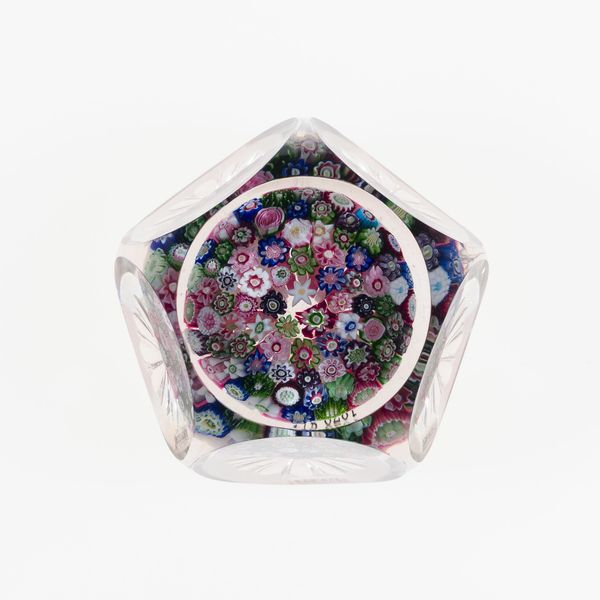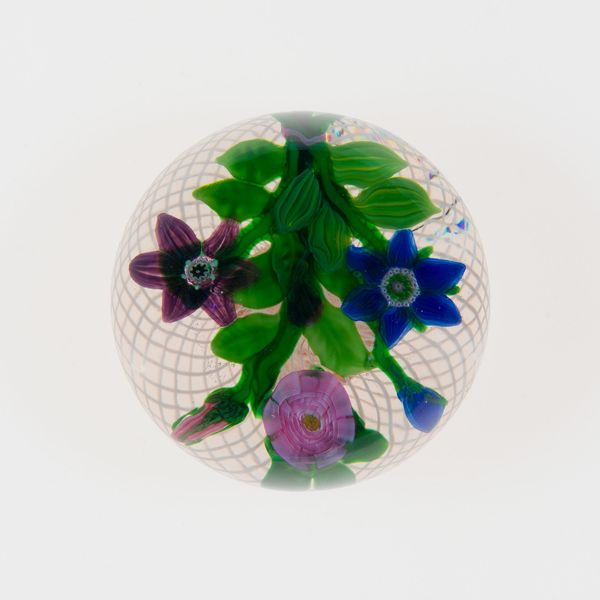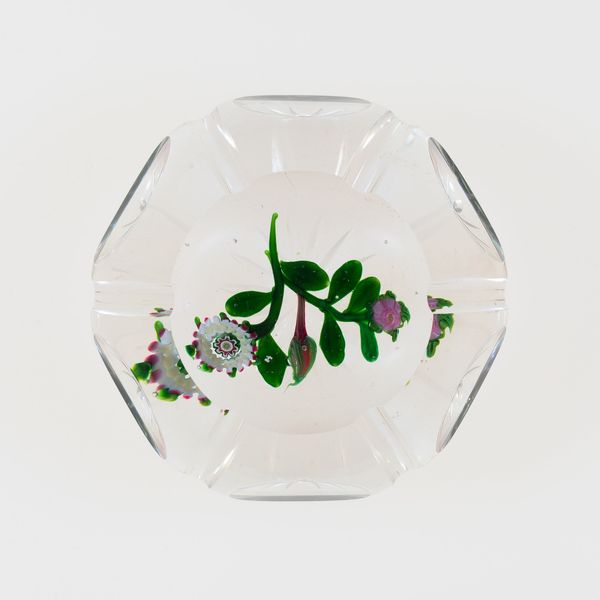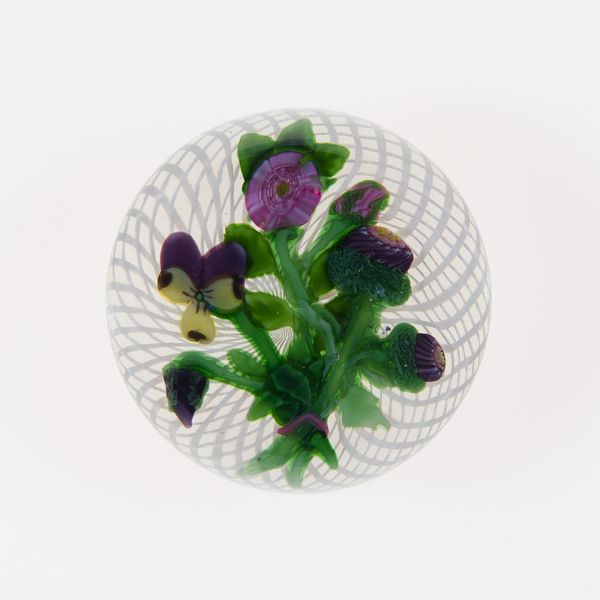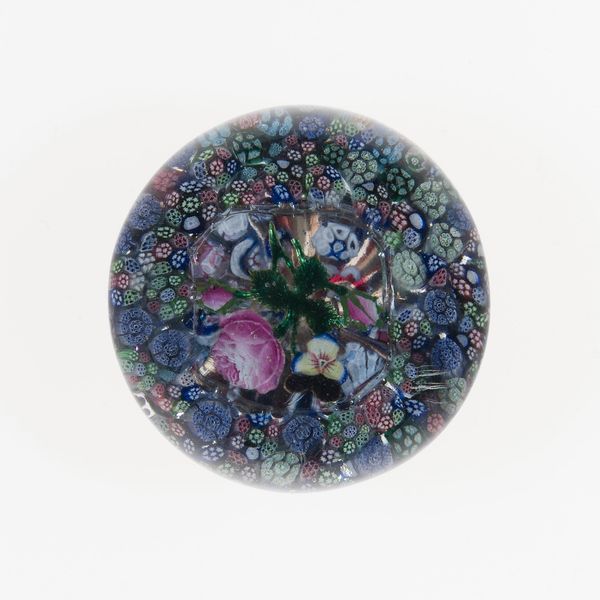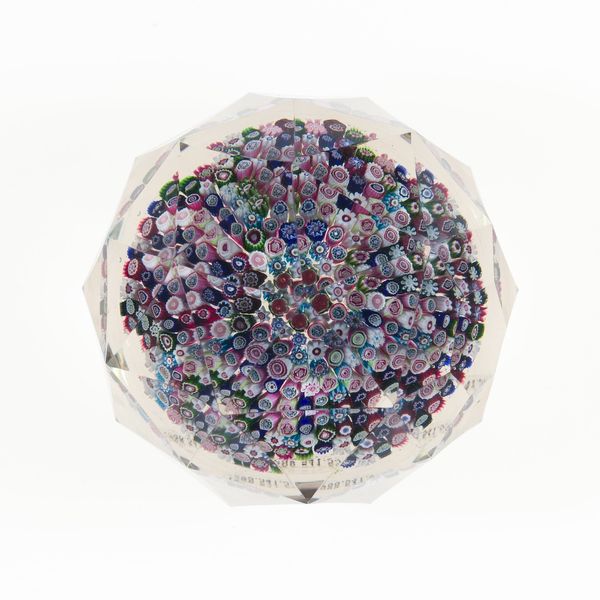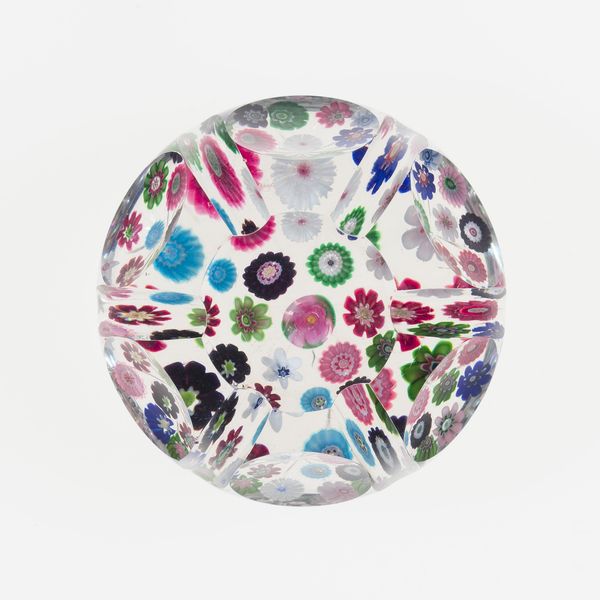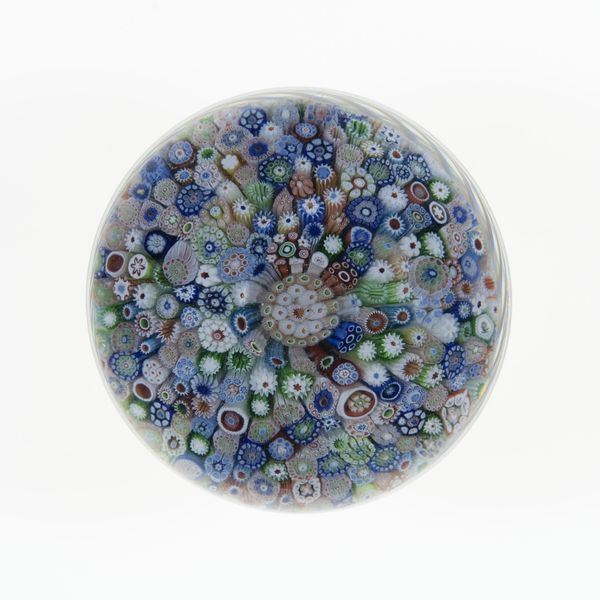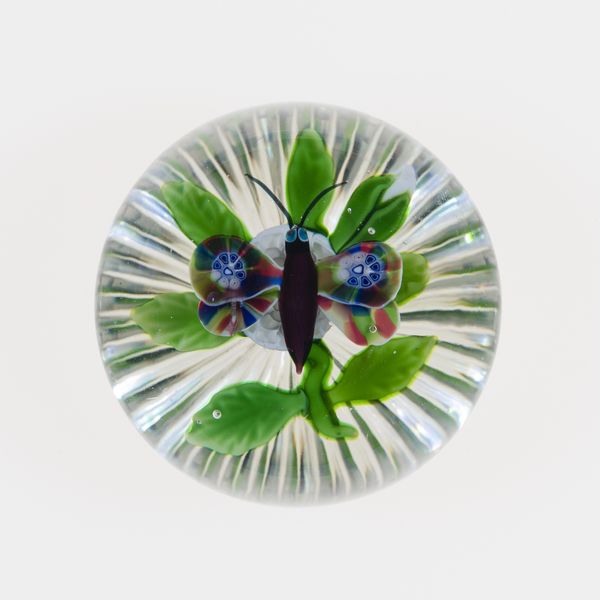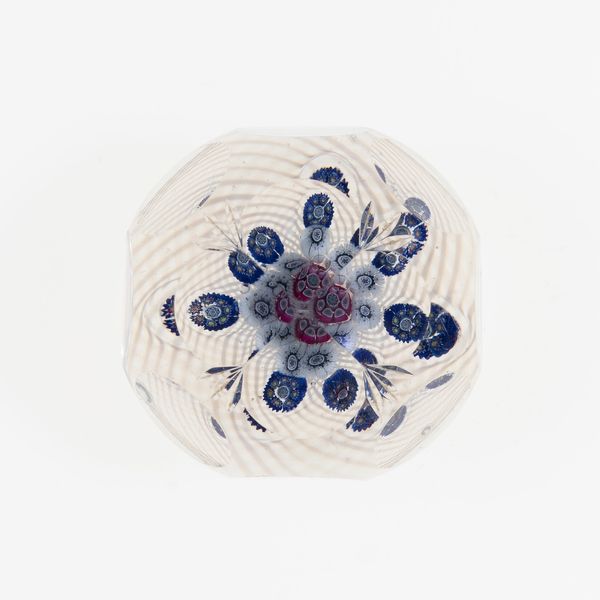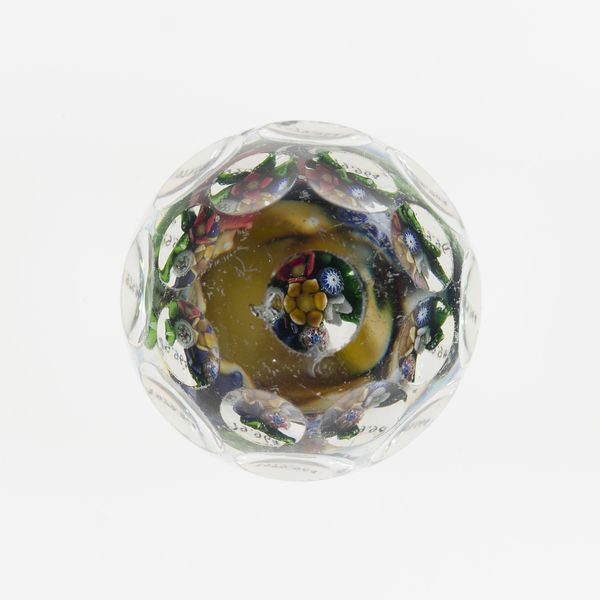
Dimensions: Diam. 8.6 cm (3 3/8 in.)
Copyright: Public Domain
This paperweight was made in France by the Clichy Glasshouse, sometime between 1837 and 1885, from molten glass. This wasn't just any glass, but carefully formulated batches, colored with metallic oxides, and brought to a liquid state in high-temperature furnaces. The technique used here is called millefiori, Italian for "a thousand flowers". The glassmakers started by creating long, thin rods of colored glass called canes. When viewed in cross-section, these revealed intricate floral patterns. The canes were bundled together, heated until they fused, stretched, and then sliced into small segments. These were then arranged in a mosaic on a fireproof surface, heated again, and encased in molten crystal. The result is both optically dazzling and curiously poignant. While the technique was highly industrialized, requiring division of labor and standardized processes, the aesthetic effect is one of endless, exuberant variety. It’s a beautiful example of how the logic of production can yield unexpected aesthetic results. Ultimately, the paperweight reminds us to look closely at how materials, making, and context intersect.
Comments
No comments
Be the first to comment and join the conversation on the ultimate creative platform.
